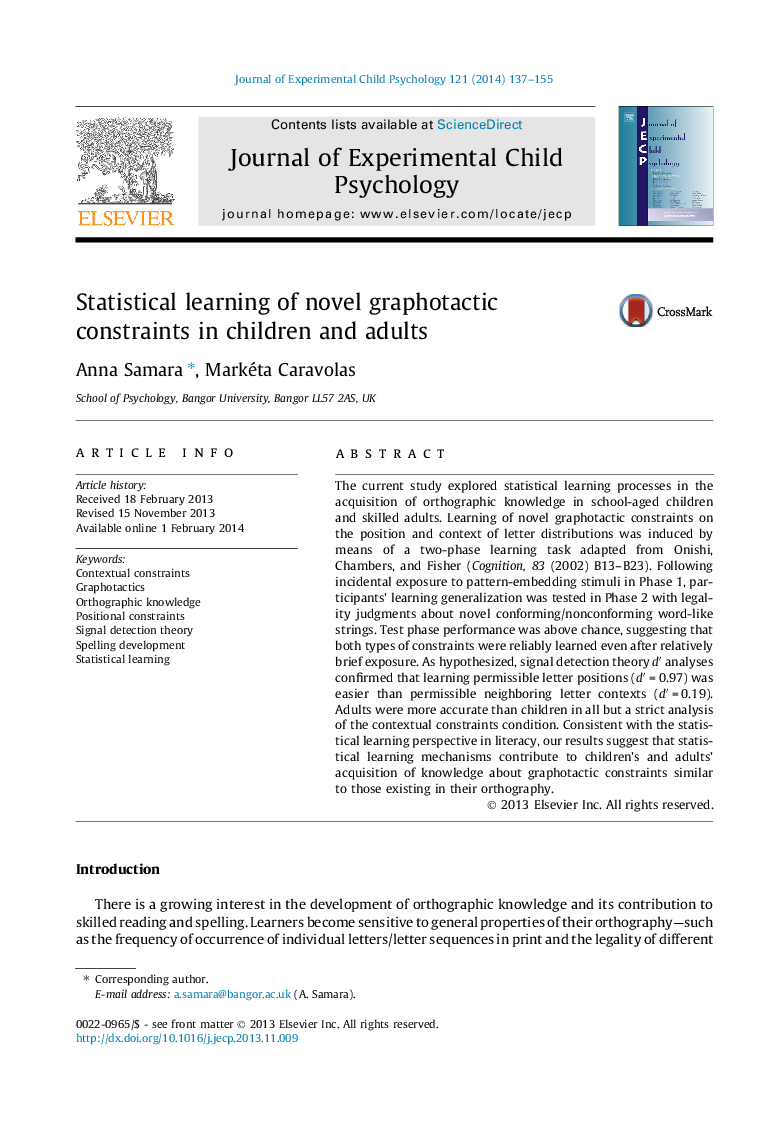| Article ID | Journal | Published Year | Pages | File Type |
|---|---|---|---|---|
| 918082 | Journal of Experimental Child Psychology | 2014 | 19 Pages |
The current study explored statistical learning processes in the acquisition of orthographic knowledge in school-aged children and skilled adults. Learning of novel graphotactic constraints on the position and context of letter distributions was induced by means of a two-phase learning task adapted from Onishi, Chambers, and Fisher (Cognition, 83 (2002) B13–B23). Following incidental exposure to pattern-embedding stimuli in Phase 1, participants’ learning generalization was tested in Phase 2 with legality judgments about novel conforming/nonconforming word-like strings. Test phase performance was above chance, suggesting that both types of constraints were reliably learned even after relatively brief exposure. As hypothesized, signal detection theory d′ analyses confirmed that learning permissible letter positions (d′ = 0.97) was easier than permissible neighboring letter contexts (d′ = 0.19). Adults were more accurate than children in all but a strict analysis of the contextual constraints condition. Consistent with the statistical learning perspective in literacy, our results suggest that statistical learning mechanisms contribute to children’s and adults’ acquisition of knowledge about graphotactic constraints similar to those existing in their orthography.
